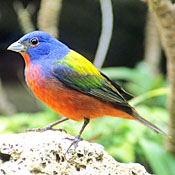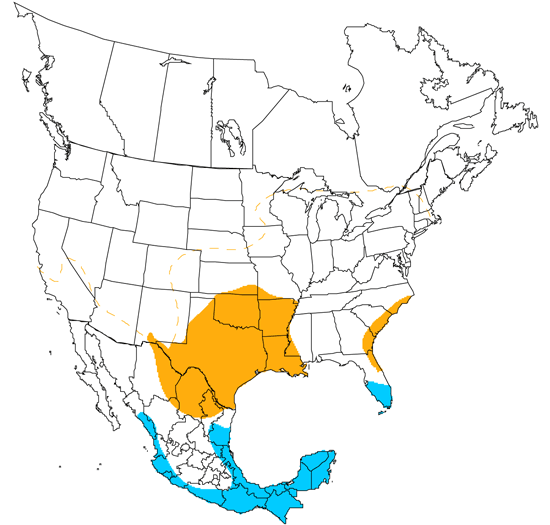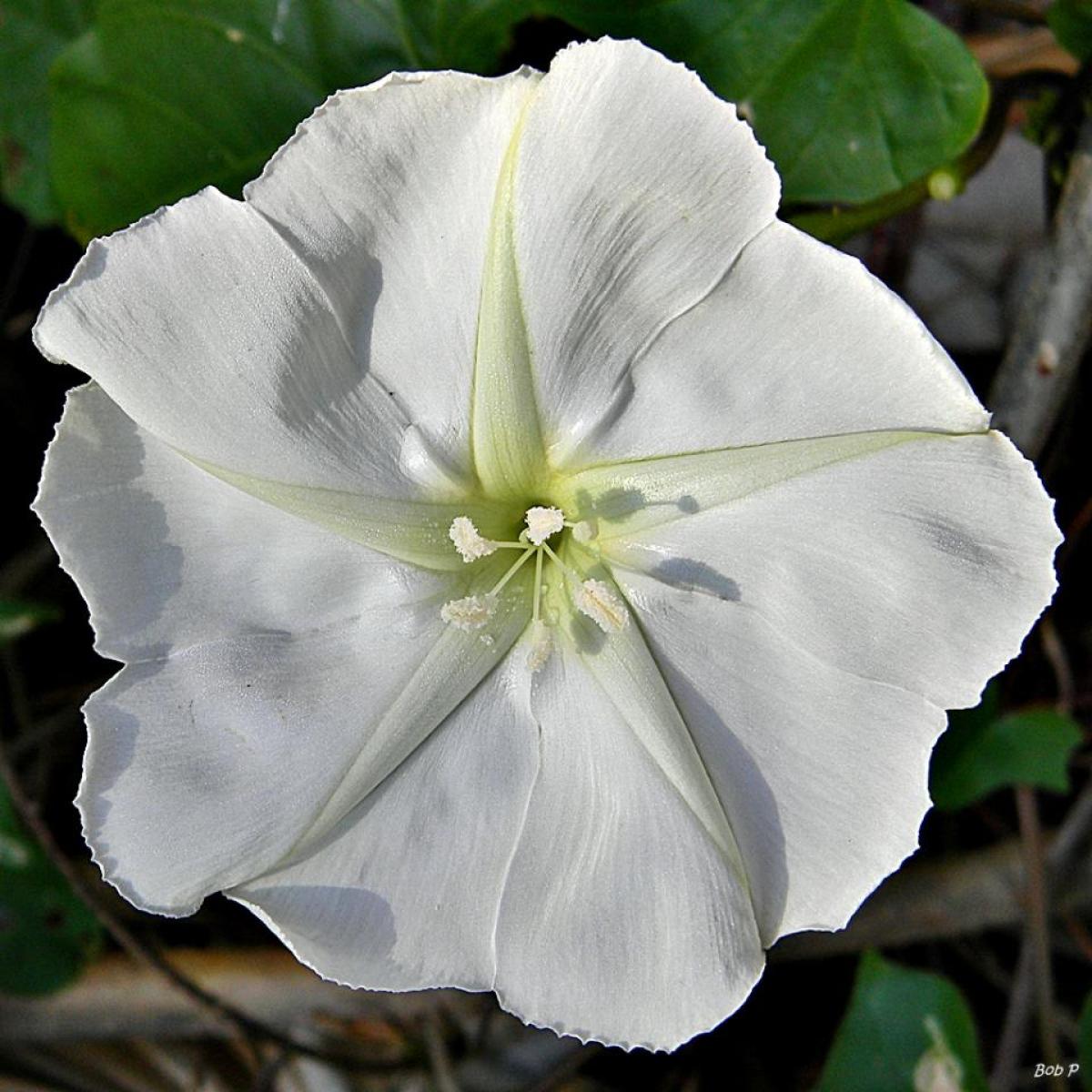Painted Bunting
Passerina ciris

Perching

Length: 6 in. (14 cm )
This spectacular species occurs in low shrubby areas, riparian vegetation, and open forests. It feeds primarily on seeds but includes insects during the nesting period. The nest is a deep, cup-like structure made of grass and leaves and placed in a dense bush or vine tangle.
The four-digit banding code is PABU.
Bibliographic details:
- Article: Painted Bunting
- Author(s): Dr. Biology
- Publisher: Arizona State University School of Life Sciences Ask A Biologist
- Site name: ASU - Ask A Biologist
- Date published:
- Date accessed:
- Link: https://askabiologist.asu.edu/activities/bird/painted-bunting
APA Style
Dr. Biology. (). Painted Bunting. ASU - Ask A Biologist. Retrieved from https://askabiologist.asu.edu/activities/bird/painted-bunting
Chicago Manual of Style
Dr. Biology. "Painted Bunting". ASU - Ask A Biologist. . https://askabiologist.asu.edu/activities/bird/painted-bunting
Dr. Biology. "Painted Bunting". ASU - Ask A Biologist. . ASU - Ask A Biologist, Web. https://askabiologist.asu.edu/activities/bird/painted-bunting
MLA 2017 Style
Be Part of
Ask A Biologist
By volunteering, or simply sending us feedback on the site. Scientists, teachers, writers, illustrators, and translators are all important to the program. If you are interested in helping with the website we have a Volunteers page to get the process started.








